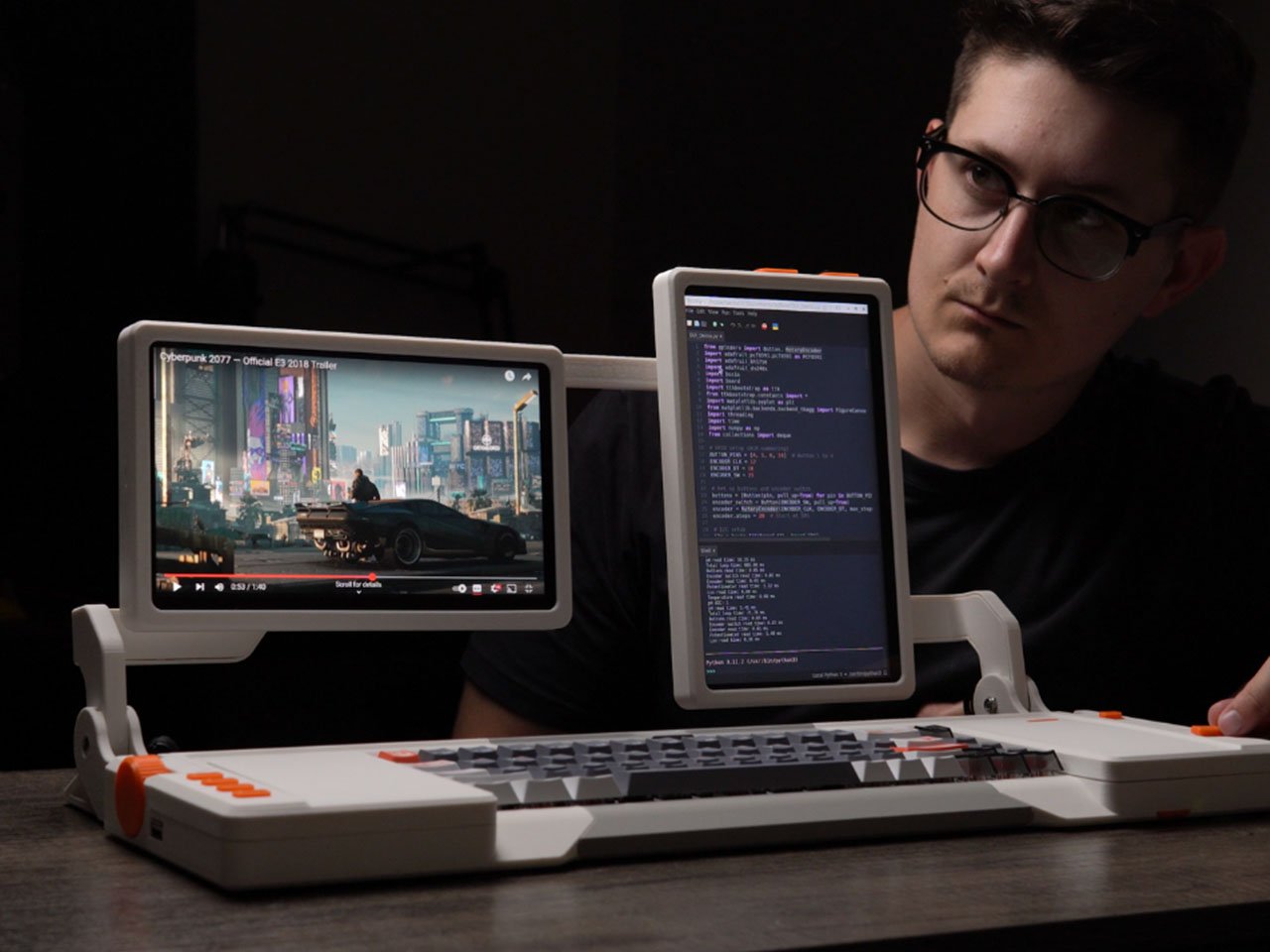There are DIYs and then there is this retro-futuristic gadget hub that demands all the attention it has got owing to its Cyberpunk vibe. Meet the Dual-Screen RPI Dev Cyberdesk by DIYer SECTOR 07 (a modder and developer), that is a builder’s dream. The project is a unique combination of aesthetics and modern computing, which I’m sure you’ve never seen before.
The Raspberry Pi-based project is inspired by the likes of Pi5-powered Cyberdesk and the 2064 Cyberdesk. The maker has chosen a 3D printed enclosure for the computer, and the programmable inputs make it even more elusive. The cyberdesk has dual 9-inch touchscreens that balance the form factor and functionality as well. All the .stl files for the design are up on GitHub, which is quite generous of the creator.
Designer: SECTOR 07
The enclosure has angular lines and bright filament to add the element of retro-futurism. To add the perfect snap fit mechanism, a lot of 3D modeling and iteration was required. Of course, avid DIYers can tinker around with the files to create their own versions, but for me, this one is amazing. The central hub of the machine is a collection of KiCad designed circuit boards connected to the Raspberry Pi’s GPIO pins. These pins are the input and output channels of the machine.
The system’s core is split across three dedicated boards – one for managing power and four programmable buttons, another for handling I2C sensor data, and a third that exposes the 40-pin GPIO header for shield compatibility. A 6A-capable power circuit featuring an N-channel MOSFET drives the twin displays, while a USB hub with integrated power injection manages stable power delivery. PCBWay’s high-quality PCBs demanded precise soldering, especially around the small pads and potential shorts.
The assembly process proved every bit as intricate as the electronics. After a first attempt was thwarted by a swapped resistor and a shorted connector, Sector 07’s YouTube teardown shows how methodical debugging got the deck breathing life. The dual 9‑inch screens perch on custom 3D‑printed rotation mounts equipped with miniature ball bearings—offering silky smooth movement that locks firmly in either portrait or landscape mode without wobble. Flat‑flex cables then carry signals cleanly between the Pi and peripherals, preserving the deck’s slim profile while avoiding cable clutter .
User interaction goes beyond touch: a compact mechanical keyboard sits behind the lower display, complemented by a linear volume slider, four programmable macro keys, and a rotatable encoder with an integrated push‑button. For hardware hackers, an external I2C port and exposed GPIO header make adding sensors or shields a breeze. SECTOR 07 even baked in a quick‑release clamp for the Pi itself—no screwdriver needed when swapping SD cards or upgrading the board.
To tie it all together, a bespoke GUI overlays on one screen, graphically reporting the state of buttons, encoder positions, GPIO pins, and any connected I2C sensors—turning raw signals into a polished interface for field testing or live demos. With open‑source .STL, STEP files and KiCad schematics are available on GitHub; the RPI DEV is as much a blueprint for experimentation as it is a showpiece. At roughly $50–60 per display plus component costs, it’s not the cheapest DIY build, but few projects capture that retro‑futuristic cyberpunk vibe with this level of finish and functionality.
The post This Split Screen Cyberdeck delivers Pi-Powered productivity in a retro-futuristic form first appeared on Yanko Design.

